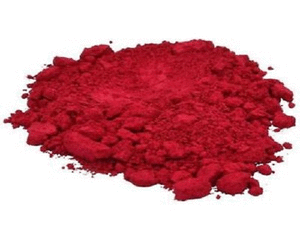Endemic to the Altiplano Potosino
The Grana Carmine Fine Cochineal, Costa (Homoptera: Dactylopiidae) is a insect of economic importance for the production of red dye (Acid Carmine E-120) used for food and cosmetics. During colonial times it represented one of the main sources of income, only surpassed by gold and silver. Dacylopius coccus

In pre-Cortetian times, fine scarlet was called by the Aztecs nocheztli, a word that means "blood of prickly pears". Writing and drawing on murals and on amate paper are examples of the use of this dye. Ceramics and textiles from the Postclassic period (900-1521 AD) were also dyed with scarlet. In colonial times, the Spanish took control of the production of carmine grana, keeping it as the third export product of Mexico, only surpassed by gold and silver. The Spanish, taking advantage of the fact that the pigment is obtained from the dried adult females of the insect, which look like seeds and are resistant like these, exported them to Europe and, to hide the origin of the product and conserve monopoly, they said they were plant products, which also gave rise to the use of phrases such as sowing, harvesting, etc., to refer to cultivation activities, words that are still preserved. It was the Spaniards themselves, in the 16th century, who brought stalks infested with fine grana from New Spain to the Canary Islands to produce pigment and supply the huge European market. It is worth mentioning, as an example, the extensive use of scarlet at that time for the uniforms of the English army, the famous "red coats", which were dyed with this pigment. Later, during the Mexican War of Independence, the first liberating armies operated in grain-producing areas, such as the states of Jalisco, Oaxaca and San Luis Potosí. When the insurgent army, commanded by Morelos, occupied the city of Oaxaca, the main product taken in the looting was grana. With the money this grana provided, Morelos was able to equip his army to continue the war. As time passed, with Independence approaching, the wealthy barn merchants (grana producers) placed themselves at the command of the insurgent army, in order not to be stripped of their wealth. Once Independence was consummated (1821), the grana continued to be cultivated. However, despite, or perhaps because of, its high global demand, Mexican pomegranate began to be produced with little control, using low-quality pomegranate strains grown in regions unfavorable for insect growth. This situation prevailed until the second half of the 19th century, when the cultivation of the grana definitively declined due to the fact that, in the framework of the Industrial Revolution, the development of chemistry provided synthetic dyes such as anilines, which were cheaper and easier to use. produce than natural dyes. Things continued like this until the 1980s, when evidence accumulated that artificial colors can cause health damage such as cancer, toxicity and some types of allergies, so that in the middle of the decade a great demand for dyes was generated. natural, an opportunity taken advantage of by Chile and Peru, which became the world's largest producers of cochineal (4 to 5 thousand tons per year). This rebound in the demand for carminic acid did not change the situation in Mexico, where currently only in the states of Oaxaca, Morelos and Jalisco are some plots dedicated to the production of fine cochineal on a small scale, mainly for artisanal purposes, until the company "Grana Carmín del Potosí" changes the conditions, using the latest in agrotechnology, it manages to produce 10 tons per year, thinking of an exponential growth that leads them to occupy the place they had previously since the GRANA Dactylopiidae is endemic to the area, which facilitates its bulk production with fine qualities that projected it to the world.





.jpg)
